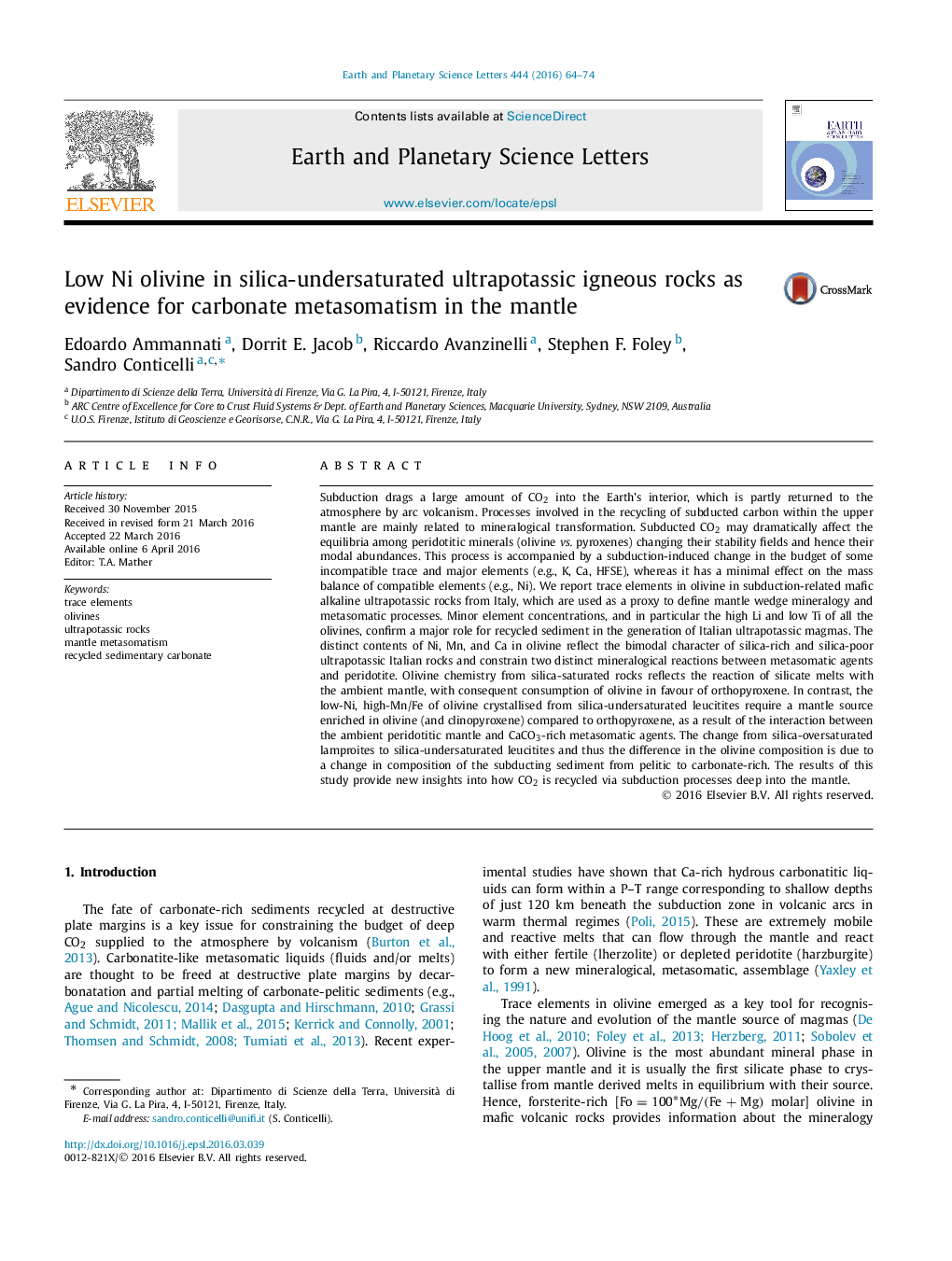| Article ID | Journal | Published Year | Pages | File Type |
|---|---|---|---|---|
| 6427488 | Earth and Planetary Science Letters | 2016 | 11 Pages |
â¢Trace elements in olivine in subduction-related mafic rocks.â¢Mantle wedge mineralogy and metasomatic processes.â¢Role of recycled sediment in the generation of metasomatic agents.â¢Recycling of carbonate-rich sediment into the mantle wedge.â¢Reactions between metasomatic melts and mantle peridotite.
Subduction drags a large amount of CO2 into the Earth's interior, which is partly returned to the atmosphere by arc volcanism. Processes involved in the recycling of subducted carbon within the upper mantle are mainly related to mineralogical transformation. Subducted CO2 may dramatically affect the equilibria among peridotitic minerals (olivine vs. pyroxenes) changing their stability fields and hence their modal abundances. This process is accompanied by a subduction-induced change in the budget of some incompatible trace and major elements (e.g., K, Ca, HFSE), whereas it has a minimal effect on the mass balance of compatible elements (e.g., Ni). We report trace elements in olivine in subduction-related mafic alkaline ultrapotassic rocks from Italy, which are used as a proxy to define mantle wedge mineralogy and metasomatic processes. Minor element concentrations, and in particular the high Li and low Ti of all the olivines, confirm a major role for recycled sediment in the generation of Italian ultrapotassic magmas. The distinct contents of Ni, Mn, and Ca in olivine reflect the bimodal character of silica-rich and silica-poor ultrapotassic Italian rocks and constrain two distinct mineralogical reactions between metasomatic agents and peridotite. Olivine chemistry from silica-saturated rocks reflects the reaction of silicate melts with the ambient mantle, with consequent consumption of olivine in favour of orthopyroxene. In contrast, the low-Ni, high-Mn/Fe of olivine crystallised from silica-undersaturated leucitites require a mantle source enriched in olivine (and clinopyroxene) compared to orthopyroxene, as a result of the interaction between the ambient peridotitic mantle and CaCO3-rich metasomatic agents. The change from silica-oversaturated lamproites to silica-undersaturated leucitites and thus the difference in the olivine composition is due to a change in composition of the subducting sediment from pelitic to carbonate-rich. The results of this study provide new insights into how CO2 is recycled via subduction processes deep into the mantle.
